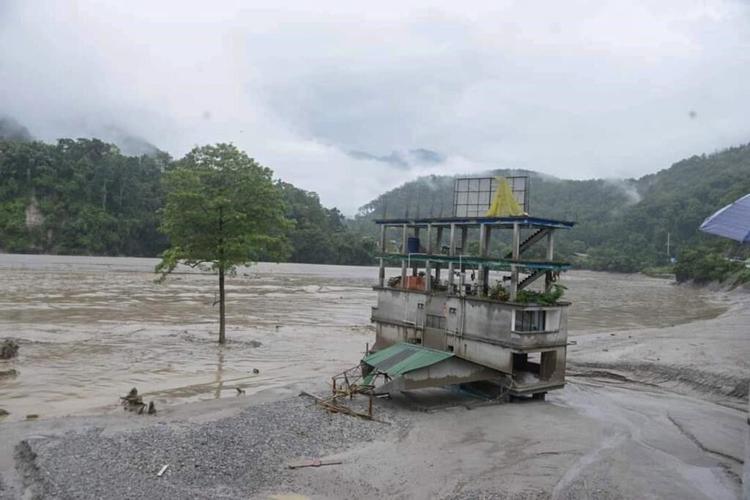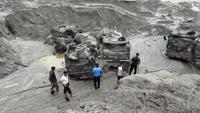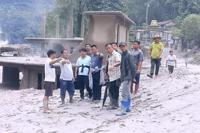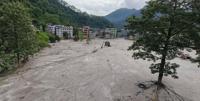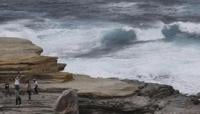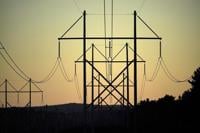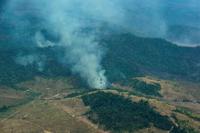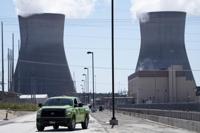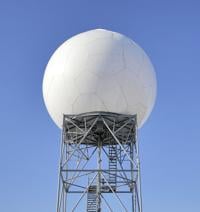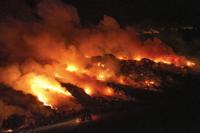NEW DELHI (AP) — Hundreds of rescuers dug through slushy debris and fast-flowing, icy water Friday in a search for survivors after a glacial lake overflowed and burst through a dam in India's Himalayan north, a disaster that many had warned was possible for years.
The flood began in the early hours of Wednesday, when water overflowed a mountain lake. It smashed through a major hydroelectric dam downstream and then poured into the valley below, where it killed at least 41 people, carrying bodies kilometers (miles) away, and forced thousands to flee their homes.
It wasn’t clear what triggered the deadly flood, the latest to hit northeast India in a year of . Experts pointed to intense rain, and a 6.2 magnitude earthquake that struck nearby Nepal on Tuesday afternoon, as possible contributors.
But the disaster also underscores a climate dilemma that pits local environmental activists who say dams in the Himalayas are too dangerous against authorities pursuing a national green energy agenda.
The design and placement of the 6-year-old Teesta 3 dam, the largest in Sikkim state, were controversial from the time it was built. A report compiled by the Sikkim State Disaster Management Authority in 2019 had identified Lhonak Lake as “highly vulnerable” to flooding that could breach dams and cause extensive damage to life and property.
The dam’s operator, and local agencies responsible for dam safety, did not respond to requests for comment Friday.
India is counting on hydroelectric dams to meet that are part of a global effort to slow climate change. The government aims to increase India’s hydro power by half by 2030, to 70,000 megawatts, and has approved across the country's mountainous north.
But the growing frequency and intensity of , driven in part by climate change, puts many dams and the people living downstream from them at risk. Last month, caused by Storm Daniel caused devastating damage to the city of Derna in Libya.
Rising temperatures also cause glaciers to melt faster, putting more pressure on dams. found that over a fifth of the 177 dams built close to Himalayan glaciers in five countries were at risk from glacial lakes, including the Teesta 3 dam.
“We knew that this was coming,” said Gyatso Lepcha, general secretary of Affected Citizens of Teesta, an environmental organization based in Sikkim, wrote in a statement that called for a safety review of all dams in the state.
The Teesta 3 hydropower project, built on the Teesta River, took nine years and cost $1.5 billion to construct. The project was capable of producing 1,200 megawatts of electricity — enough to power 1.5 million Indian homes — and began operation in 2017.
But local activists argued that the dam didn't have enough safety features.
“Despite being the biggest project in the state, there were no early warning systems installed even though the glacier overflowing was a known risk,” said Himanshu Thakkar of the non-governmental organization South Asian Network for Rivers, Dams and People.
Thakkar said authorities failed to apply the lessons from a in Himalayan state of Uttarakhand that killed 81 people, allowing an “eerily similar” disaster to occur. India passed a dam safety law in 2021, but Teesta 3 is not on a list of dams whose safety is monitored by India’s top dam regulator.
India’s ��ɫtv Disaster Management Agency said Friday that it plans to set up early warning systems at most of India’s 56 known at-risk glacial lakes.
Parts of northern Bangladesh along the Teesta River also flooded Friday as water traveled from Sikkim, local media reported. The waters are expected to rise more, as the country’s weather office forecast possible heavy rains in coming days.
In Sikkim, more than 2,000 people were rescued after Wednesday’s floods, the state Dsaster Management Authority said, adding that authorities set up 26 relief camps for more than 22,000 people.
One soldier was previously reported missing was rescued, and the bodies of seven have been found, state police said.
Eleven bridges in the Lachan Valley were washed away by the floodwaters, which also hit pipelines and damaged or destroyed more than 270 houses in four districts, officials said.
The army said it was providing medical aid and phone connectivity to civilians in the areas of Chungthang, Lachung and Lachen, and local media reported that said the army was erecting temporary bridges to bring food to affected areas.
Nearly 50 people died in flash floods and landslides in August in nearby Himachal Pradesh state, and record rains in northern India killed more than 100 people over two weeks in July.
___
Arasu reported from Bengaluru, India. AP writers Aniruddha Ghosal in Hanoi, Vietnam and Julhas Alam in Dhaka, Bangladesh contributed to this report.
___
Associated Press climate and environmental coverage receive support from several private foundations. See more about AP’s climate initiative . The AP is solely responsible for all content.

